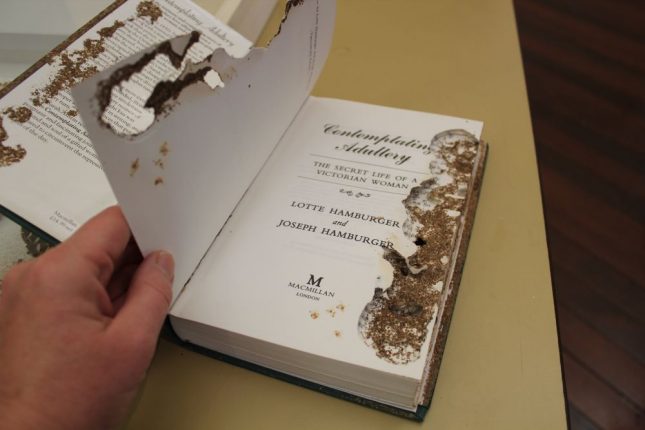
When to worry
Finding one insect does not necessarily mean you have an infestation on your hands, especially if these are ‘non-threatening’ species, like ants and large moths.
Casual visitors vs. long-term residents
Some museum pests, like carpet beetles, often find their way into buildings in spring and are found near windows and doorways. They may not yet have found their way into your collections. The best thing to do in this instance is to remain vigilant – if you notice more insects, a more thorough inspection is warranted.
Silverfish are more permanent residents, but don’t usually hang out in packs. Finding one or two indicates that conditions are suitable for them, but you may not have a huge problem on your hands.
Clothes moths, on the other hand, are rarely innocent. If you find clothes moths inside you can be fairly certain they are living within the building.
Dead vs. live
Dead insects and damage to collections do not necessarily mean you have a current infestation, as it may be that the damage occurred a long time ago.
If you find insect larvae, eggs, frass or small piles of fresh dust near wooden objects, this would indicate you have an active infestation inside your building. The infestation still may not be in collection material (eg it may be in debris inside roof spaces), but they must be treated as quickly as possible.
Finding adult clothes moths also probably means you have an infestation somewhere, as they tend to stay closer to their food source than some other insects.
What to do if you find an insect
- Capture it and place in a small glass bottle, vial or plastic container. Try not to squash the insect as this makes identification more difficult.
- Write on the container when and where you found the insect(s).
- Identify the insect.
- Continue to check the area as part of your normal schedule.
What to do if you find an infestation
- Immediately quarantine the affected objects by sealing into plastic bags and removing from collection spaces.
- Check nearby collections to ensure there is no further infestation. Recheck the same area each week for a month, and bag any items you are concerned about.
- Clean the area if necessary – eg get rid of dead insects and debris.
- Keep a record. Write down the time, place and nature of the infestation then contact conservators and any other specialists who may be required.
